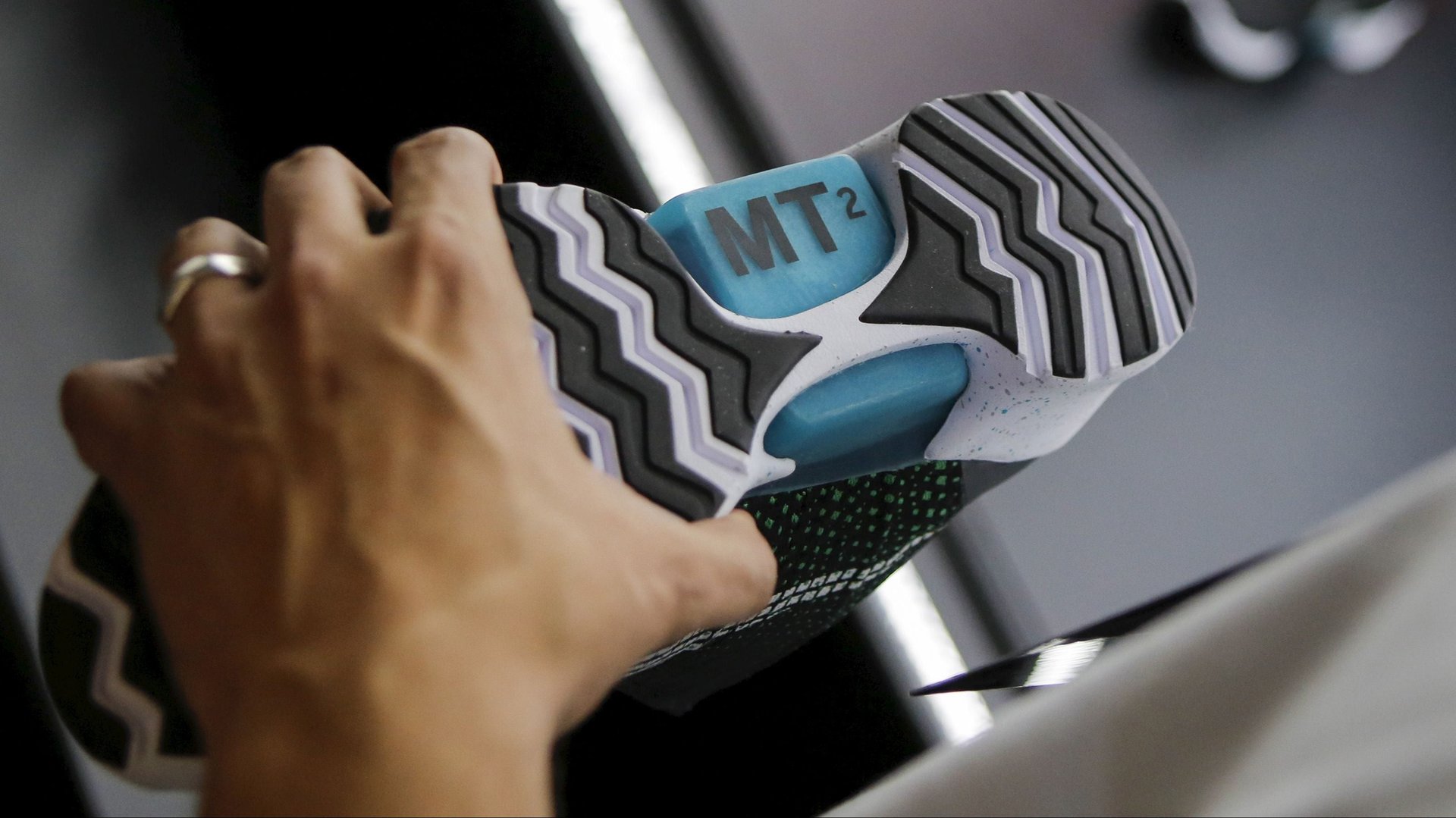A former Nike engineer has a simple strategy for getting creatives out of a rut
Maintaining energy and creativity can be a major challenge when working on a tough project for a long time, even if that project is building a futuristic shoe for the biggest sports company in the world.


Maintaining energy and creativity can be a major challenge when working on a tough project for a long time, even if that project is building a futuristic shoe for the biggest sports company in the world.
Former Nike engineer Tiffany Beers knows a thing or two about this problem. She led (paywall) the decade-long endeavor to make the auto-lacing shoe in Back to the Future II a reality, and to adapt that technology into a functional sneaker for athletes, the HyperAdapt 1.0. At a May 3 conference held by the Footwear Distributors and Retailers of America, Beers described how she and her team overcame the major hurdles to building the groundbreaking shoe, including her strategy for countering the creativity-sapping effect of burnout.
To keep things fresh, Beers said, take one of your variables and flip it. She explained the concept with a story:
The team involved in the auto-lacing project included an electrical engineer, a mechanical engineer, and a maker. “That was someone that every time we come up with a different concept, he would go make it,” Beers said. “He’d been making HyperAdapts for years.”
Not surprisingly, the maker started to wear down, and his creativity suffered. So he approached Beers, who presented him with a challenge that wasn’t directly related to auto-lacing: The maker, who was a runner, had to make a shoe for her. It could be any kind of shoe he wanted, but he had to be able to run five miles in it when it was finished. He could use any of the equipment in the Nike office, but none of the materials—not even adhesive. All his materials had to come from Home Depot.
“A few days later, he brought me back a pair of shoes that you would’ve never known the materials were from Home Depot,” Beers said. “He even incorporated the Home Depot logo in the top of the tongue from one of their bags.”
The shoes held up great through their five-mile run. But more important, they helped the maker get out of his rut, and find new inspiration.
Beers found the exercise so successful that she has continued to use it, including during her brief stint at Tesla after leaving Nike in 2017 (though she added teasingly that it was “too serious there”). She also used it once more on that maker at Nike, this time with materials from Pet Smart. That shoe didn’t perform quite as well.
The point, though, Beers said, is to question things you normally wouldn’t question, and to flip one of the variables in the task—like where your materials—to get you thinking about it from a new perspective. “Keep it fresh,” she said. “When the same things are done over and over, the process, product, and experience become stale. Sometimes you need to force yourself out of that state.”